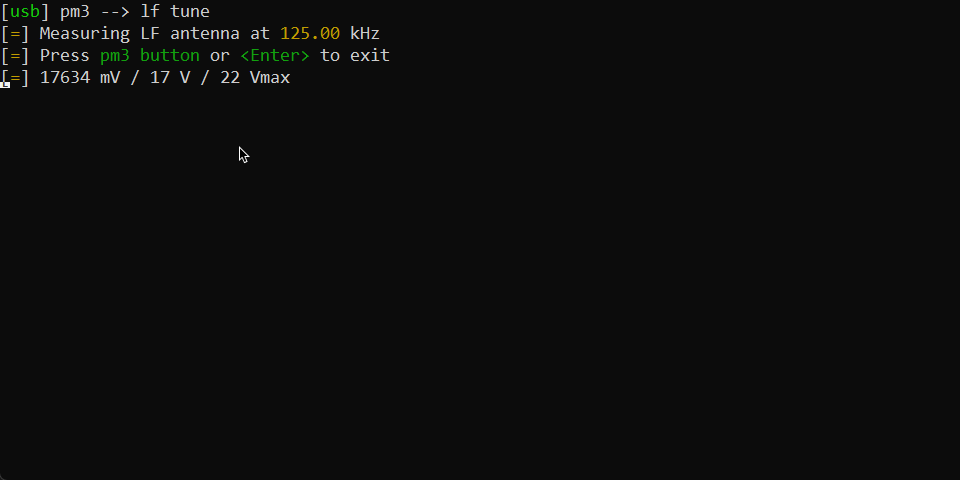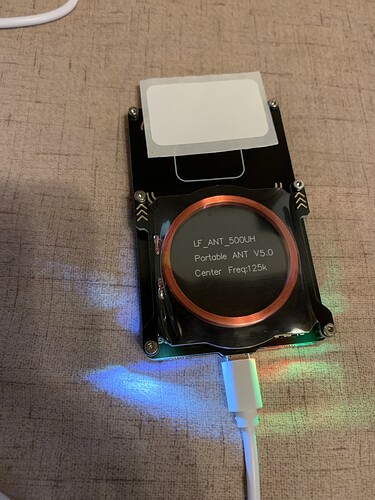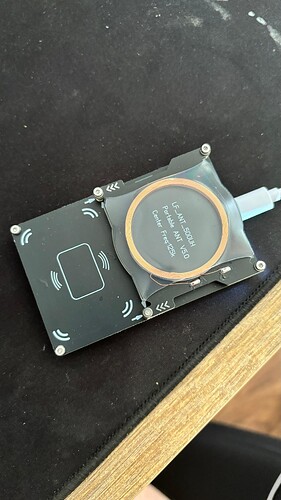Hello everyone,
I’m trying to clone an NFC tag, but unfortunately, I have no idea what chipset it uses. I have a Proxmark3 Easy, which is not able to identify the chipset. I suspect it might be a low frequency (LF) card.
I would really appreciate if someone experienced in this area could help guide me through the cloning process. I’m a complete newbie when it comes to NFC cloning.
As a small thank you for the assistance, I would like to send €10 via PayPal to whoever helps me successfully clone the tag.
I would be very grateful for the support. Thank you!
[usb] pm3 --> lf search -u
[=] Note: False Positives ARE possible
[=]
[=] Checking for known tags...
[=]
[=] Odd size, false positive?
[+] Indala (len 346) Raw: 80000000004000060000000082000000403000000007804040c300f0
[+] Valid Indala ID found!
[=] Couldn't identify a chipset
[usb] pm3 --> lf search -u
[=] Note: False Positives ARE possible
[=]
[=] Checking for known tags...
[=]
[=] DEBUG: detectindala | 55
[-] No known 125/134 kHz tags found!
[=] Checking for unknown tags...
[=] FSK clock.......... no
[=] ASK clock.......... detected
[=] ASK demodulation... failed
[=] NRZ clock.......... no
[=] PSK clock.......... detected
[+] PSK1 demoded bitstream
[=] ----------------------
[+] DemodBuffer:
[+] 00101010101010101010101101010101
[+] 00101010101010101010101010101010
[+] 10101010101010101010101001010101
[+] 01010101010101010101010010101001
[+] 01010101101010101010101010101010
[+] 10101010101010101010101010100101
[+] 01010101001010101010101010010101
[+] 01010101010101010101010101001010
[+] 11010101010101010010101010101010
[+] 01010101010101010101101010101010
[+] 10101101010101010101011010101010
[+] 10100101010101010101010101010101
[+] 01010101010101010100101010010101
[+] 01010101010101010010100101010101
[+] 01010101101010101010101010101101
[+] 01101010101010101010101010101010
[+] 10101010101010101010101010101010
[+] 10101010101010010101010101010101
[+] 01010101010101001010101010101010
[+] 10110101010101001010101010101010
[+] 01010101010101101010100101010101
[+] 01101010101010101010101010101010
[+] 10101010101010101010101001010101
[+] 10101010101010110101010110101010
[+] 10101010101011010010101010101010
[+] 10110101011010110101010101010100
[+] 11010101010101010101010101010101
[+] 01010100100101010111010101010101
[+] 01010101010101010010100110101010
[+] 10101010101010101010101010101010
[+] 10101101010101101010101011010101
[+] 01010101101010101010101010101010
[+] 10101010101010101010101010101010
[+] 10010101010101010101010110101010
[+] 10101010101010010101010101010101
[+] 01010100101010101001010101010101
[+] 01010101010101010101010101001101
[+] 01010101010101010101010101010101
[+] 01101010100101101010101010101010
[+] 10101010101010101010101010101010
[+] 10101010101010101010101010101010
[+] 10101010101010101010101010101010
[+] 10101010101010101010101010101010
[+] 101010110101010101010101001010
[=] Possible PSK1 modulation detected!
[=] Could also be PSK2 - try 'data rawdemod --p2'
[=] Could also be PSK3 - [currently not supported]
[=] Could also be NRZ - try 'data rawdemod --nr
[=] PSK - auto correlations
[?] No repeating pattern found, try increasing window size
[?] No repeating pattern found, try increasing window size
[?] No repeating pattern found, try increasing window size
[?] No repeating pattern found, try increasing window size
[?] No repeating pattern found, try increasing window size
[?] No repeating pattern found, try increasing window size
[?] No repeating pattern found, try increasing window size
[?] No repeating pattern found, try increasing window size
[?] No repeating pattern found, try increasing window size
[?] No repeating pattern found, try increasing window size
[?] No repeating pattern found, try increasing window size
[?] No repeating pattern found, try increasing window size
[?] No repeating pattern found, try increasing window size
[?] No repeating pattern found, try increasing window size
[=] Couldn't identify a chipset



